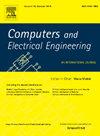一种基于控制器区域网络图的车载入侵检测深度体系结构
IF 4
3区 计算机科学
Q1 COMPUTER SCIENCE, HARDWARE & ARCHITECTURE
引用次数: 0
摘要
积极将数字创新集成到汽车系统中,可以实现自动化的完美安全性,这是智能交通系统的一个主要关注点。由于固有的协议漏洞,确保车载控制器局域网(CAN)总线通信仍然是一个主要挑战。在这项研究中,我们提出了一种新的基于深度学习的入侵检测方法,可以捕获CAN流量中的结构和上下文模式。具体来说,我们引入了CANGraph-feature图像的概念,其中结合有效载荷和仲裁ID信息的CAN消息交互被表示为图结构,随后转换为图像。这种转换可以使用卷积神经网络(cnn),利用其强大的空间特征提取能力来检测细微和复杂的异常。我们优化的CNN架构自动从CANGraph图像中学习判别特征,有效识别异常行为。在真实的车辆数据集上进行的大量实验表明,所提出的方法可以稳健地检测各种攻击类型,包括重放、模糊攻击、DoS和欺骗。所提出的深度架构显示出通过在保持较低的计算开销和延迟的同时实现强大的性能来增强车载网络安全性的潜力。本文章由计算机程序翻译,如有差异,请以英文原文为准。
A deep architecture for in-vehicle intrusion detection using controller area network-graph relied feature images
Active integration of digital innovations into automotive systems anticipates flawless security and safety in automation, and it is a major concern in intelligent transport systems. Securing the in-vehicle Controller Area Network (CAN) bus communication remains a major challenge due to inherent protocol vulnerabilities. In this study, we propose a novel deep learning-based intrusion detection approach that captures structural and contextual patterns within CAN traffic. Specifically, we introduce the concept of CANGraph-feature images, where CAN message interactions combining payload and arbitration ID information are represented as graph structures and subsequently transformed into images. This transformation enables the use of Convolutional Neural Networks (CNNs), leveraging their powerful spatial feature extraction capabilities to detect subtle and complex anomalies. Our optimized CNN architecture automatically learns discriminative features from the CANGraph images, effectively identifying abnormal behaviors. Extensive experiments on real-world vehicular datasets demonstrate that the proposed method robustly detects a wide range of attack types, including replay, fuzzing, DoS, and spoofing. The presented deep architecture shows promising potential to enhance the security of in-vehicle networks by achieving strong performance while maintaining low computational overhead and latency.
求助全文
通过发布文献求助,成功后即可免费获取论文全文。
去求助
来源期刊

Computers & Electrical Engineering
工程技术-工程:电子与电气
CiteScore
9.20
自引率
7.00%
发文量
661
审稿时长
47 days
期刊介绍:
The impact of computers has nowhere been more revolutionary than in electrical engineering. The design, analysis, and operation of electrical and electronic systems are now dominated by computers, a transformation that has been motivated by the natural ease of interface between computers and electrical systems, and the promise of spectacular improvements in speed and efficiency.
Published since 1973, Computers & Electrical Engineering provides rapid publication of topical research into the integration of computer technology and computational techniques with electrical and electronic systems. The journal publishes papers featuring novel implementations of computers and computational techniques in areas like signal and image processing, high-performance computing, parallel processing, and communications. Special attention will be paid to papers describing innovative architectures, algorithms, and software tools.
 求助内容:
求助内容: 应助结果提醒方式:
应助结果提醒方式:


